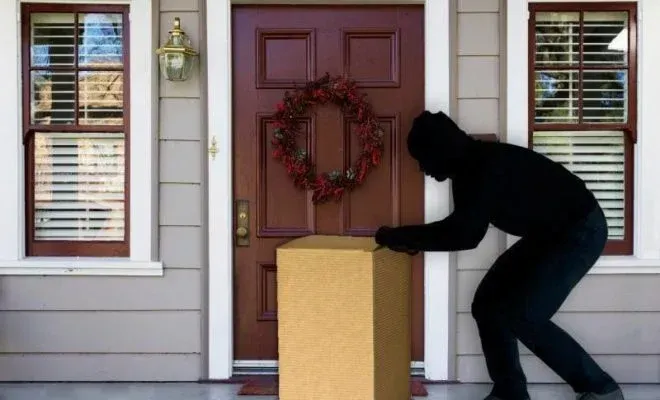How To Prevent Package Theft
Ever come home expecting a package only to find it missing? You're not alone—package theft, often called "porch piracy," is on the rise, and it can be incredibly frustrating and costly. But don't worry, there are several effective ways to protect your deliveries. Whether you’re expecting a valuable item or just everyday necessities, ensuring they arrive safely is crucial. This guide will walk you through the top strategies to prevent package theft, giving you peace of mind and keeping those porch pirates at bay. Ready to secure your packages? Let’s dive in!
Read more about How to deter burglars!
Install Security Cameras
Security cameras are one of the most effective deterrents against package theft. When thieves see a camera, they’re less likely to risk being caught on video. Place cameras in clear view near your front door and other vulnerable areas to monitor any activity. Modern security cameras come with motion detection, night vision, and real-time alerts that you can access via your smartphone. This not only helps deter potential thieves but also provides valuable evidence if a theft does occur, increasing the chances of recovering your stolen items.
Require a Signature for Delivery
Requiring a signature for delivery ensures that your package is handed directly to someone rather than left unattended. This simple step can significantly reduce the risk of theft. When placing your order, select the option for signature confirmation if it's available. Most major carriers offer this service, and it provides an extra layer of security. While it may require you to be home during the delivery window or arrange for someone else to be there, the peace of mind knowing your package won't be left out in the open is well worth it.
Use a Package Locker
Using a package locker service, like Amazon Locker, provides a secure and convenient alternative to home deliveries. These lockers are placed in various public locations, such as convenience stores and shopping centers, and are accessible 24/7. When your package arrives, you'll receive a code to unlock the locker and retrieve your item at your convenience. This eliminates the risk of packages being stolen from your porch and ensures that your deliveries are safe until you can pick them up. Setting up and using a package locker is straightforward, making it an excellent option for preventing package theft.
Ship to a Secure Location
Shipping your packages to a secure location is a straightforward and effective way to prevent theft. Consider having your items delivered to your workplace if your employer allows it, ensuring that someone is always present to receive them. Alternatively, you can use secure pickup points offered by carriers like UPS Access Point, FedEx Office, or Amazon Hub. These services allow you to pick up your packages at a time that suits you, eliminating the risk of them being left unattended at your front door. Coordinating deliveries to a friend or family member's address who is usually home is another practical option.
Read more about Guarding your garage!

Install a Video Doorbell
A video doorbell serves as both a security camera and a doorbell, providing you with a live video feed of your front door. These devices can alert you when someone approaches your door, allowing you to see, hear, and speak to visitors through your smartphone. Popular models like Ring, Nest Hello, and Arlo offer features such as motion detection, two-way audio, and cloud storage for recorded footage. Installing a video doorbell is simple and can be done using your existing doorbell wiring or with a battery-powered option. This not only deters potential thieves but also gives you the ability to monitor your front porch anytime, anywhere.
Provide Delivery Instructions
Leaving specific delivery instructions for your courier can significantly reduce the risk of package theft. When placing an order, most online retailers and carriers allow you to add special instructions, such as asking the delivery person to leave the package in a hidden spot, like behind a planter or a side door. You can also request that they ring the doorbell or knock loudly to alert you of the delivery. By guiding the delivery person to place packages in less conspicuous locations, you can make it harder for thieves to spot and steal them. Customizing delivery instructions is a simple yet effective way to protect your packages.
Sign Up for Delivery Alerts
Signing up for delivery alerts keeps you informed about the status of your packages, allowing you to act promptly when they arrive. Most major carriers, such as USPS, UPS, and FedEx, offer email or SMS notifications that let you know when your package is out for delivery, has been delivered, or requires a signature. These alerts can help you coordinate your schedule to be home when your package arrives or to make arrangements for someone to collect it on your behalf. By staying updated on your delivery’s progress, you can reduce the likelihood of your package sitting unattended for long periods, thus minimizing the risk of theft.
Conclusion
Package theft is an increasingly common issue, but with the right strategies, you can protect your deliveries and gain peace of mind. From installing security cameras and requiring a signature for delivery to using package lockers and signing up for delivery alerts, there are numerous effective methods to keep your packages safe. By taking proactive steps and employing these practical solutions, you can ensure that your items reach you securely, reducing the risk of them being stolen from your porch. Stay vigilant, be informed, and make use of these strategies to safeguard your deliveries and keep those porch pirates at bay.
Call Us Any Time!







